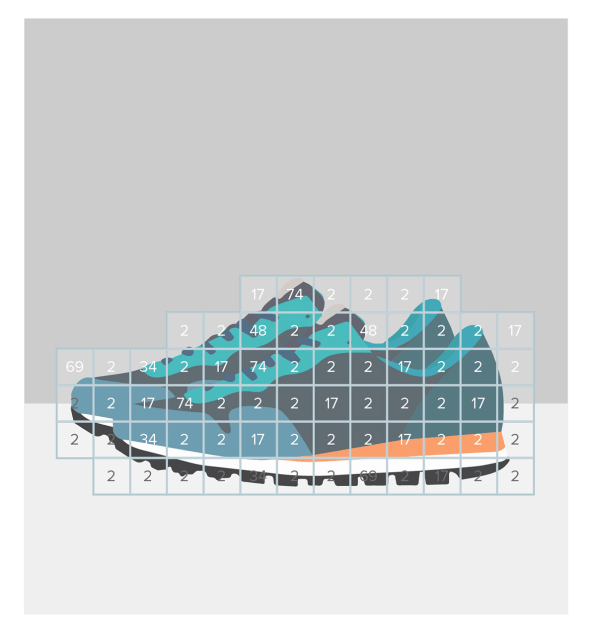For almost as long as we’ve been typing words into Google’s search bar, we’ve been trailed by online ads based on those searches. The logic being that if they put ads in front of our eyes that are related to what we’re searching–shoes, diapers, cars, anything–we’ll be more likely to click. And even though ad tech has advanced by leaps and bounds over the last decade, that’s still essentially what advertisers are trying to do.
Recently, in order to boost its competitiveness with Nike among serious runners, and raise awareness for its Run Camp program, Under Armour targeted photos on social feeds–finding people who were posting specific models of its running shoes, specific running shoes of its competition, as well as photos that featured running bibs, belts, and other accessories. Once found, that person would be served up a short video ad about Run Camp after they’d left Instagram or Facebook.
So if you posted the new bib for that half-marathon you’re training for on Instagram or Facebook, later while browsing The Huffington Post mobile site you might see an ad for Run Camp. All because of your photo.
The tech is from Toronto-based shop Cluep, which has been working with brands like Nike, Coca-Cola, McDonald’s, Toyota, and yep, Under Armour, on text and location targeting, but now, following consumer behavior on social, is pushing hard into visuals. Cluep Pics lets marketers target people based on the imagesthey publicly post on Twitter, Instagram, and Facebook and serve them ads in their mobile apps and mobile websites. It uses a proprietary image recognition engine that learns from every image it sees to identify brands, products, and scenarios to effectively engage people around their interests, activities, and lifestyle.
So if there happens to be a McDonald’s in the background of one of your photos, you may get a Golden Arches ad targeting you somewhere soon. To many people, this sounds pretty creepy. Of course, Cluep CEO Karan Walia (who co-founded company in 2012 with CTO Anton Mamonov and advertising operations director Sobi Walia) says the goal behind Pics is to effectively deliver advertising to the right people, at the right time, when they are most receptive based on the types of images they post on social media. Sound familiar? But contrary to creeped out, Walia says even just through beta testing, they’re already seeing conversions and click-through rates five to 10 times better than industry standards.
“Traditionally the click through rate is around 0.5-0.8%, however, we’re seeing results in metrics like video completion rates, visit lift rates, cost to drive back to store and more are between five to eight times the industry benchmark,” says Walia. “And this isn’t just in one, two, or three programs, this is the average across all the 500 campaigns we’ve done across different verticals. That would suggest we’re driving higher results than other vendors, and those engagement rates with consumers.”


Image recognition tech itself isn’t new, and Walia says Cluep’s primary competition for Pics is the social platforms themselves but believes his firm is just a couple of steps ahead.
“Right now, there is no ad tech platform that is doing image-based targeting like we are,” he says. “Getting a high enough accuracy to classify an image around a brand, logo or activity hasn’t been available at scale until now. I’m getting bombarded with back-to-school ads from Walmart on Instagram. I’m not a student and I’m not a parent. Why is this happening? Walmart is a client of ours, and now with Cluep Pics they’ll be able to better target potential consumers because they’ll see family photos or relevant photos that will let them know if these types of ads will be relevant.”
And you know what’s next, right? the growth of online social video has exploded over the last few years. It’s even been suggested that Facebook could be all video by 2021, which is also where Walia says his tech is headed. The Cluep Pics engine is a stepping stone to video, and the company hopes to launch it by Q2 2018.

“For video, the back-end is very similar to Cluep Pics because video is just still frames strung together, so the challenge is to focus on the right frames, and being able to classify not just logos, products, and scenarios, but also actions,” says Walia. “That’s going to be a big next step, allowing brands to target consumers not only based on the type of videos they’re sharing but also know that the ads are being served in safe environments. We’ve seen the concerns over YouTube. We see a big opportunity in allowing publishers to let marketers select the kind of videos their ads appear in or around.”

